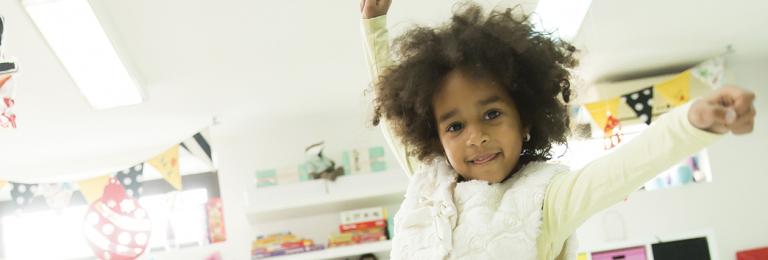Facilitating Active Free Play or Unstructured Physical Activity
Active free play, or unstructured physical activity, is when a child is actively moving their body in a self-chosen way. Early years providers should set up and monitor the play environment, but children should choose and direct the play activities.
Unstructured physical activity allows preschoolers to practice social skills and encourages creativity (by allowing them make up their own games and rules).
Active free play emphasizes active parts of unstructured physical activity. It is important that early years providers set up environments that encourage preschoolers to move their bodies during free playtime.
- For example, if a child is sitting at the playground playing with a truck, they are not being active. However, if they are running the truck along the equipment in the playground and racing it down the slide, they are participating in low to moderate intensity physical activity.
Early years providers can facilitate unstructured physical activity by:
- Choosing environments carefully
- Ensure children have lots of space to move
- Remove items and obstacles that encourage sedentary behaviour, such as chairs
- Making suitable equipment available
- Provide some equipment that children might associate with being active, such as the beanbags you had used earlier that day in an active game
- Provide less-traditional equipment that encourages reaching, jumping, balancing, or changing body position
- Large boxes, tunnels, foam blocks, taped pathways on the floor
- Planning structured and unstructured physical activity together
- Introduce new equipment by giving preschoolers free time to explore the equipment. Follow this up with a structured game using this equipment and end with unstructured physical activity time with the same materials
- Encouraging active narratives
- Playing high-tempo music in the background
- Modeling active free play
Adapted from Healthy & Active Preschoolers and Spark.
